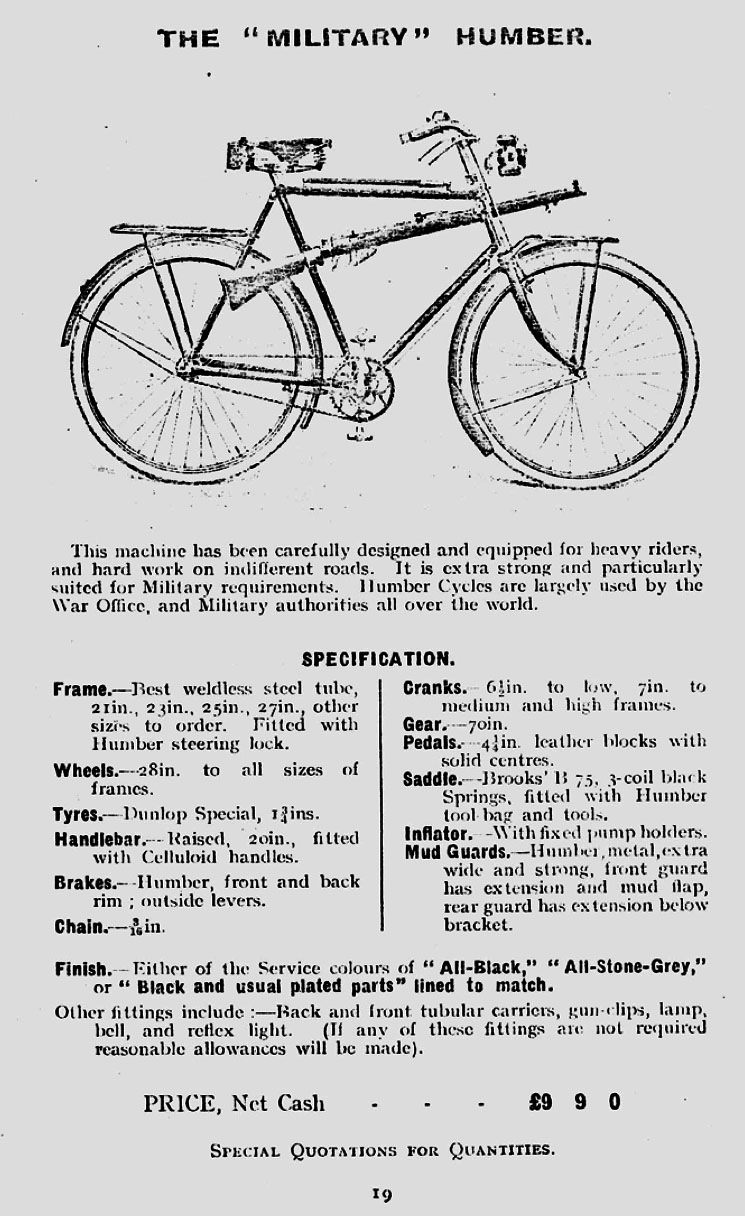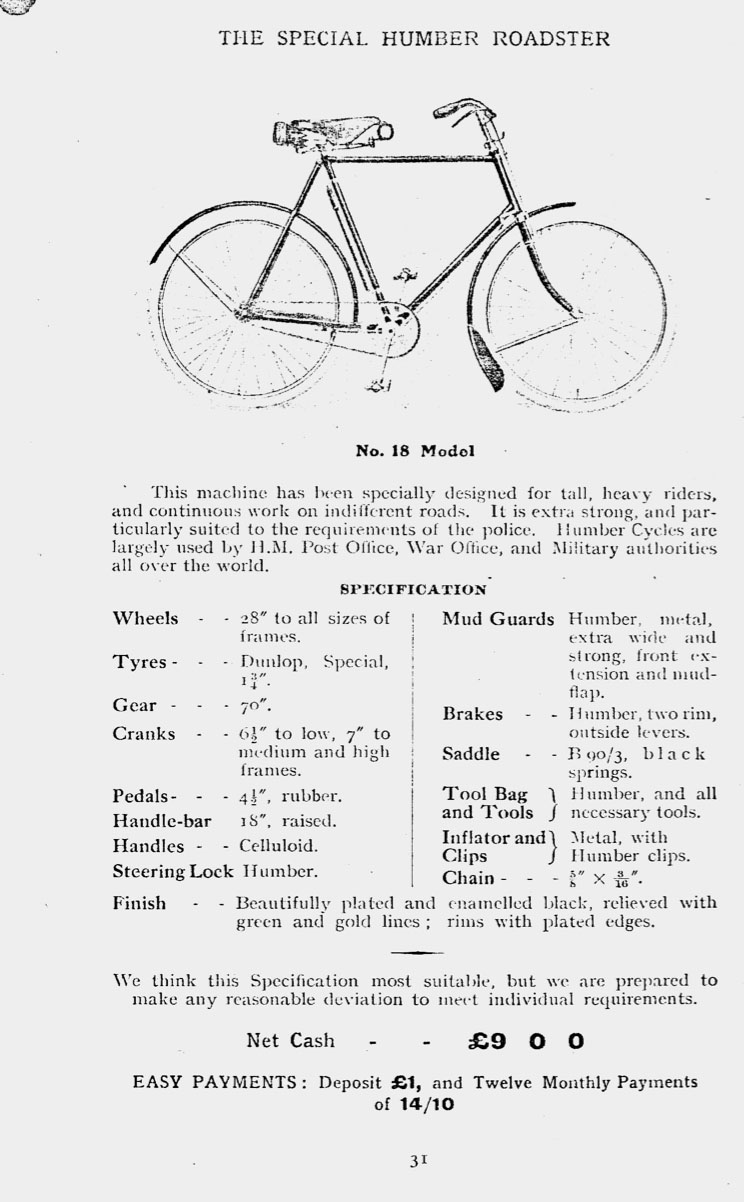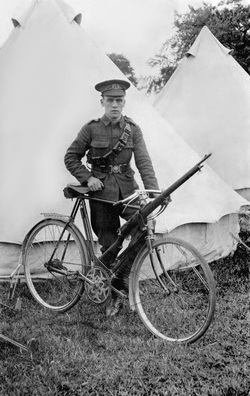

As you can see from the above 1893 illustration of the ‘Humber No 11 Military,’ the company had been turning out military models for many years prior to the Great War, both at home and abroad.
Humber bicycles were supplied to members of the Royal Family of Great Britain and royal families around the world. So as well as being adopted by the War Office in Great Britain, Humber also found favour with colonial governments internationally.
For their 1915 ‘Military Humber’ the company simply added military fittings to their most robust frame. As the Humber rear brake linkage conflicts with the usual position for the front rifle clip – on the offside of the headstock – Humber’s front rifle clip was uniquely mounted on the nearside (left side), as you can see from the catalogue illustration further down the page and in the screenshot below of a Humber Military Bicycle on parade with the Royal Sussex Regiment Cyclist Corps.


WW1 era Beeston Humber with Military Fittings
24″ Frame
28″ Wheels
(Now sold)

As well as Military Humbers supplied by the company, with military fittings as per their catalogue illustration, many Humbers already owned by soldiers who enlisted were impressed into military service. Some went to France with their owners, and others saw service at home for coastal protection duties. Gents’ Humbers were popular among the aristocracy, in particular the Beeston Humber, which was the model that the King himself rode. This example is a Beeston Humber with military fittings. The difference is that it has a chaincase and the distinctive Beeston duplex front fork (see below). This example does not have the three speed gear as shown in the catalogue illustration – it was not usually used for military purposes.
There are no known surviving British military roadsters from The Great War. Those that survived the war were put back into civilian use. As the only difference was their removable fittings it would be very hard to prove military usage. However, nearly all bicycles of the war era would have seen some service towards the war effort, as bicycles became the primary form of individual transportation under wartime conditions. A bicycle of the era with military fittings added (such as this) is now the best available option as an example of a World War One military model bicycle.
This Beeston Humber is in good unrestored original condition. The transfer (decal) on the steering head is part visible, and it retains its distinctive Humber lamp bracket. One of the handlebar grips is cracked, but usable. The heavy duty Wrights saddle is the correct style, though newer. The Beeston comes with a nice set of military fittings and accessories (rifle not included – for display only) and is ready to ride and display.





THE MILITARY HUMBER

The ‘Military Humber’ – illustrated above in the company’s 1915 catalogue – had a strengthened frame (using Humber’s tradesmen’s bike specifications) and 1 3/4″ wheels.
The military model was developed from the ‘Special Humber Roadster’ shown in the 1911 Humber catalogue, below: it was the same model with additional accessories.

Compare the contemporary Tradesman’s Humber, below, with strengthened frame and forks.













1915 HUMBER CATALOGUE EXTRACTS




1916 HUMBER 6hp MOTORCYCLE OUTFIT














1911 HUMBER POPULAR DESPACTH RIDER’S BICYCLE

The photo above shows John Herbert (Jack) Radley, from Hough Green, Widnes, Cheshire, who served for three years during the build up to the War as a private with the Army Cyclist Corps. His civilian Humber bicycle is fitted with rifle clips and is a Coventry-made Popular.

ON PATROL NEAR THE CLIFFTOP: OVINGDEAN, EAST SUSSEX














































